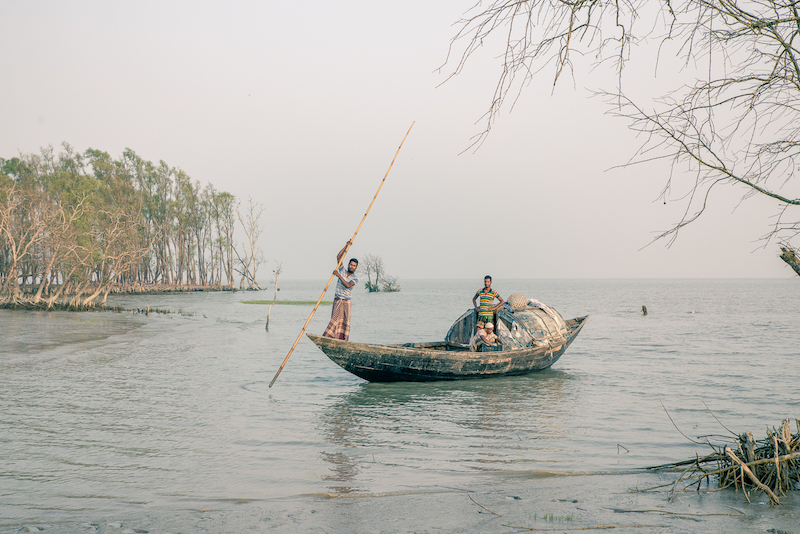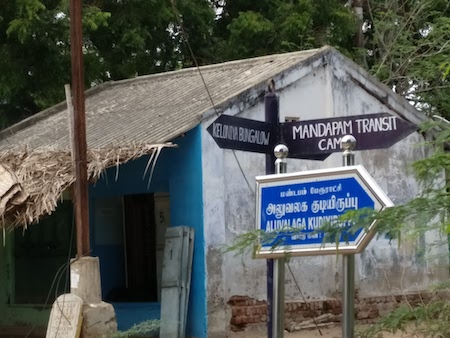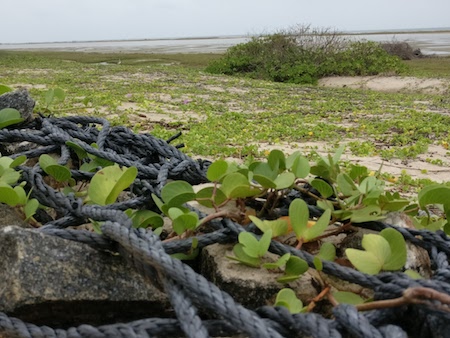 An island located thirty-seven miles off the coast of Bangladesh has become the focus of international scrutiny. In April 2020, news agencies reported that boats carrying Rohingya refugees fleeing Myanmar were adrift in the Bay of Bengal and the Andaman Sea, making their way towards Thailand and Malaysia. These governments refused to let the passengers of the ill-fated vessels disembark, citing fears that refugees might be carriers for COVID-19, and national borders had been closed. International organizations, including the United Nations High Commissioner for Refugees (UNHCR), urged governments to respect standards of refugee and asylum-seeking, even while implementing quarantine measures at borders. But this was to no avail. The boats steered their way northward again. Bangladesh, which had already received the highest number of Rohingya refugees, allowed the boats to land. They would be housed not at Cox's Bazaar (one of the largest refugee camps in the world hosting about 900,000 refugees) but on Bhasan Char, the island off its coast with which I began.
An island located thirty-seven miles off the coast of Bangladesh has become the focus of international scrutiny. In April 2020, news agencies reported that boats carrying Rohingya refugees fleeing Myanmar were adrift in the Bay of Bengal and the Andaman Sea, making their way towards Thailand and Malaysia. These governments refused to let the passengers of the ill-fated vessels disembark, citing fears that refugees might be carriers for COVID-19, and national borders had been closed. International organizations, including the United Nations High Commissioner for Refugees (UNHCR), urged governments to respect standards of refugee and asylum-seeking, even while implementing quarantine measures at borders. But this was to no avail. The boats steered their way northward again. Bangladesh, which had already received the highest number of Rohingya refugees, allowed the boats to land. They would be housed not at Cox's Bazaar (one of the largest refugee camps in the world hosting about 900,000 refugees) but on Bhasan Char, the island off its coast with which I began.
The now-familiar refrain - "the virus knows no borders" or "we are all in the same boat" - seems cruel, given the predicament that faces Bhasan Char's future residents. Quite to the contrary, as countries closed their borders - locking fences, building walls, shutting airports – it seemed that borders were all the more important. Visuals of people thronging airports in the days leading up to the closures became the staple of news cycles. At these borders, protocols for quarantine were ever-changing. Governments in South and South East Asia (as elsewhere) required travelers to fill up forms, acquire permits and passes, narrate their travel histories, and record body temperatures in valiant efforts to contain a global pandemic. Officials, gloved and masked, digital thermometers in hand, became moving checkpoints. The border, it seemed, was everywhere. As the fate of the Rohingya aboard these boats reveals, borders are experienced with vastly differing levels of fear and violence. Boats have been labeled potential "hot spots" along with migrant labor camps or urban slums (as in the Persian Gulf or Singapore). Where - in this epidemiological imagination - was a place like Bhasan Char?
 Arupjyoti Saikia writes in The Unquiet River, his magisterial biography of the Brahmaputra river, about the formation of chars in the deltaic regions of rivers that drain into the Bay of Bengal. Formed by silt and sediment, the "age" of these islands is estimated based on the density of vegetation; Bhasan Char is understood to be no more than twenty years old. It is subject to the cyclones and torrential rains that are a defining feature of the Bay's monsoons. Officials claim that the houses/dwellings on the island have flood shelters for protection. Human rights organizations point out that these are unlikely to save refugee lives. Scholars like Lindsay Bremner working at the intersection of architecture, history, and politics recognize how environmental forces shape, even defy, buildings; how “sedimentary logics” – referring to the ephemeral nature of the chars – push back against the state’s efforts to house the Rohingya on seemingly permanent land. Indeed, the state’s knowledge of the chars’ temporariness – that nature will push back – may be the point of housing / quarantining the Rohingya on Bhasan Char after all.
Arupjyoti Saikia writes in The Unquiet River, his magisterial biography of the Brahmaputra river, about the formation of chars in the deltaic regions of rivers that drain into the Bay of Bengal. Formed by silt and sediment, the "age" of these islands is estimated based on the density of vegetation; Bhasan Char is understood to be no more than twenty years old. It is subject to the cyclones and torrential rains that are a defining feature of the Bay's monsoons. Officials claim that the houses/dwellings on the island have flood shelters for protection. Human rights organizations point out that these are unlikely to save refugee lives. Scholars like Lindsay Bremner working at the intersection of architecture, history, and politics recognize how environmental forces shape, even defy, buildings; how “sedimentary logics” – referring to the ephemeral nature of the chars – push back against the state’s efforts to house the Rohingya on seemingly permanent land. Indeed, the state’s knowledge of the chars’ temporariness – that nature will push back – may be the point of housing / quarantining the Rohingya on Bhasan Char after all.
Places like Bhasan Char have previously been invoked in the name of territorial sovereignty. Between 2009 and 2014, India and Bangladesh were engaged in a maritime boundary dispute before the Permanent Court of Arbitration at The Hague. One of the places embroiled in the dispute was South Talpatty, a riverine island much like Bhasan Char, that both India and Bangladesh claimed for their own to gain access to potential submarine oil and gas reserves (for more on the law of the sea, maritime boundaries, and access to continental shelves, see Surabhi Ranganathan’s essay here). Even before arguments concluded at the Court, in 2010, thousands of miles away from the coasts of India and Bangladesh, South Talpatty disappeared, submerged into the slow-moving waters. To use islands as leverage in international boundary disputes is not uncommon. But this global pandemic has revealed new complexities in the understanding of statelessness at sea.
 Terraqueous histories of this kind must necessarily engage with the question of contagion. I have written elsewhere about Dhanushkodi, the tip of the Indian mainland on its southeastern coast, a short distance from Sri Lanka’s northern coast. From this edge on the Indian Ocean littoral, travelers to Ceylon, including contracted plantation laborers, fled their famine-wracked villages, boarding ferries for Ceylon, hoping for a better life. Before boarding the ferry, laborers were subject to mandatory quarantine at Mandapam to prevent the spread of smallpox, leprosy, and cholera that had ravaged the island. In later years, Dhanushkodi became the first point on the Indian mainland that refugees fleeing Sri Lanka's civil war would glimpse. When the civil war broke out in 1983, this former quarantine camp and emigration depot became a refugee camp. In an Associated Press photograph from 2006 that has been used in many news stories, men, women, and children (mentioned only as “refugees”) walk in from the waters of the Gulf of Mannar, lungis drenched, young children hoisted on hips, dragging soaked suitcases behind them. Although the war has ended, many remain stateless in India today.
Terraqueous histories of this kind must necessarily engage with the question of contagion. I have written elsewhere about Dhanushkodi, the tip of the Indian mainland on its southeastern coast, a short distance from Sri Lanka’s northern coast. From this edge on the Indian Ocean littoral, travelers to Ceylon, including contracted plantation laborers, fled their famine-wracked villages, boarding ferries for Ceylon, hoping for a better life. Before boarding the ferry, laborers were subject to mandatory quarantine at Mandapam to prevent the spread of smallpox, leprosy, and cholera that had ravaged the island. In later years, Dhanushkodi became the first point on the Indian mainland that refugees fleeing Sri Lanka's civil war would glimpse. When the civil war broke out in 1983, this former quarantine camp and emigration depot became a refugee camp. In an Associated Press photograph from 2006 that has been used in many news stories, men, women, and children (mentioned only as “refugees”) walk in from the waters of the Gulf of Mannar, lungis drenched, young children hoisted on hips, dragging soaked suitcases behind them. Although the war has ended, many remain stateless in India today.
Dhanushkodi's designation (until recently) as a “ghost town," located on the edge of the ocean, devastated by cyclones, echoes the mystery surrounding Bhasan Char (only aerial photographs of the island are available as journalists are not allowed to visit) Governments repeatedly note that refugee camps are hotbeds of infection during global pandemics. Yet, precious little seems to be done to alleviate these concerns. Instead, governments house "temporary people" (to use novelist Deepak Unnikrishnan's book title) in temporary places, with little to protect them from the rising waters of the Bay. No, we are not all in the same boat.
 At this moment, I am thinking about the stakes of writing histories of displacement and abandonment. What role do temporary places play in these narrations? I am specifically thinking of terraqueous spaces like Bhasan Char or Dhanushkodi, encampment sans fences and walls, surrounded by treacherous waters. Typically, scholars have resorted to seeing these places (think Guantanamo) as exceptional, suspended, an out-of-way-place-out-of-time. In this same moment, I am also thinking of cities where I spent time learning to be a historian: Chennai, Calicut, Colombo, Yangon. South Asian coastal cities like these top the list of those affected by climate change. The political and ethical stakes for the historian in highlighting these two kinds of climate change-induced displacement, abandonment, and loss feel quite different. What are our professional obligations towards writing histories of “temporary” places? Can we hide behind scholarly discussions of the long duree, where, some might reasonably argue, everything may be portrayed as temporary?
At this moment, I am thinking about the stakes of writing histories of displacement and abandonment. What role do temporary places play in these narrations? I am specifically thinking of terraqueous spaces like Bhasan Char or Dhanushkodi, encampment sans fences and walls, surrounded by treacherous waters. Typically, scholars have resorted to seeing these places (think Guantanamo) as exceptional, suspended, an out-of-way-place-out-of-time. In this same moment, I am also thinking of cities where I spent time learning to be a historian: Chennai, Calicut, Colombo, Yangon. South Asian coastal cities like these top the list of those affected by climate change. The political and ethical stakes for the historian in highlighting these two kinds of climate change-induced displacement, abandonment, and loss feel quite different. What are our professional obligations towards writing histories of “temporary” places? Can we hide behind scholarly discussions of the long duree, where, some might reasonably argue, everything may be portrayed as temporary?
